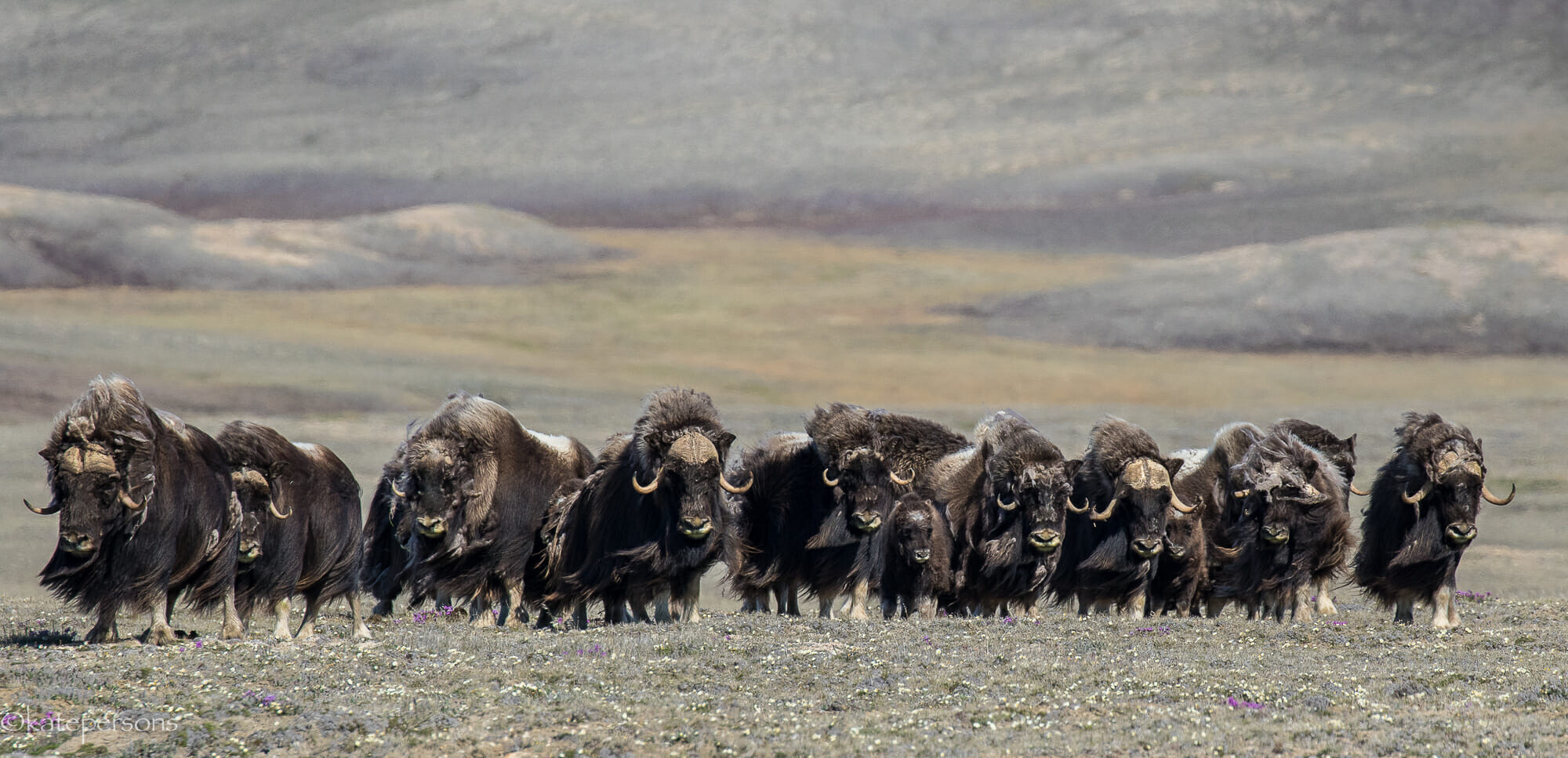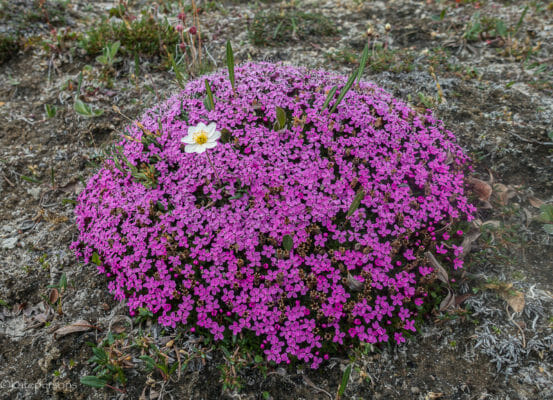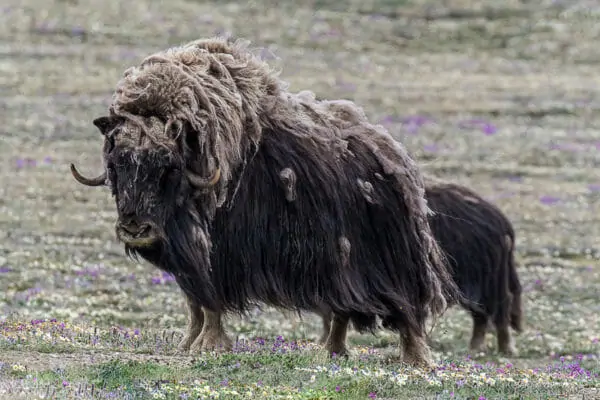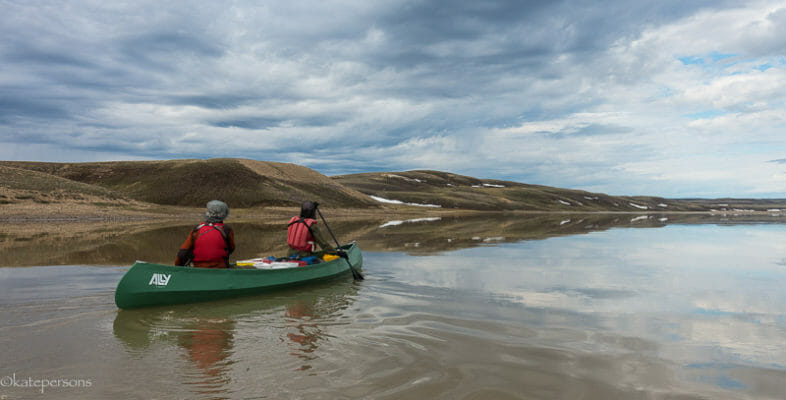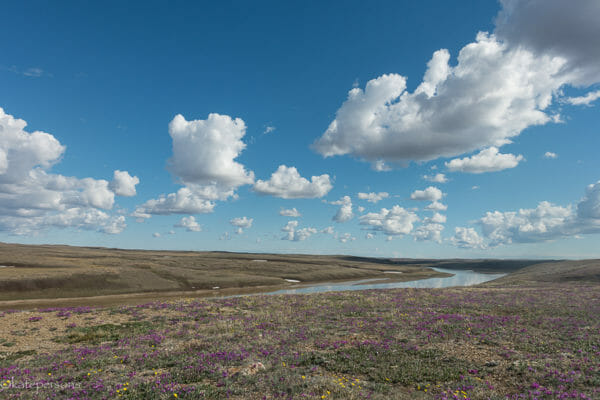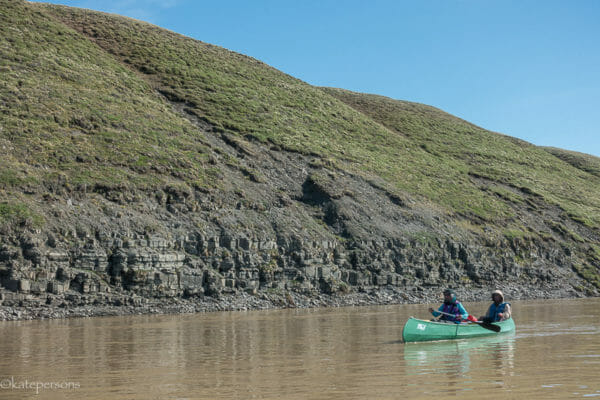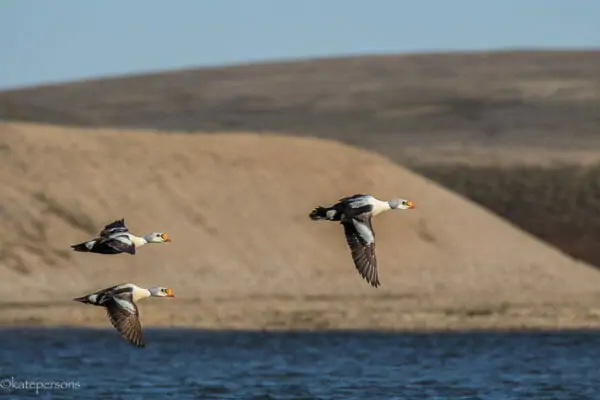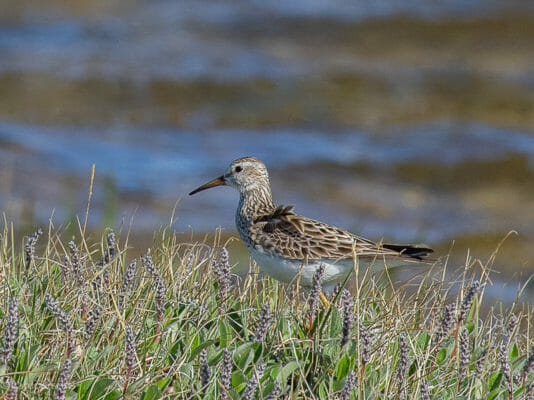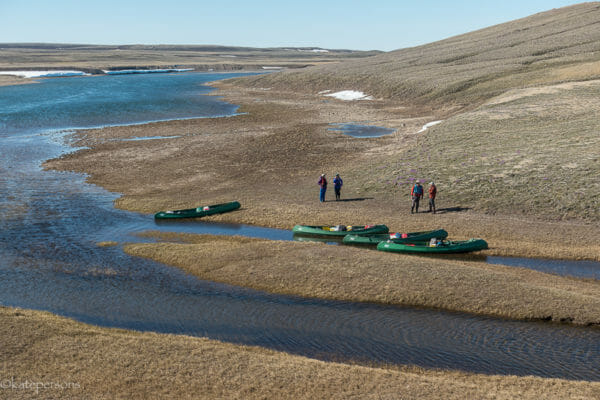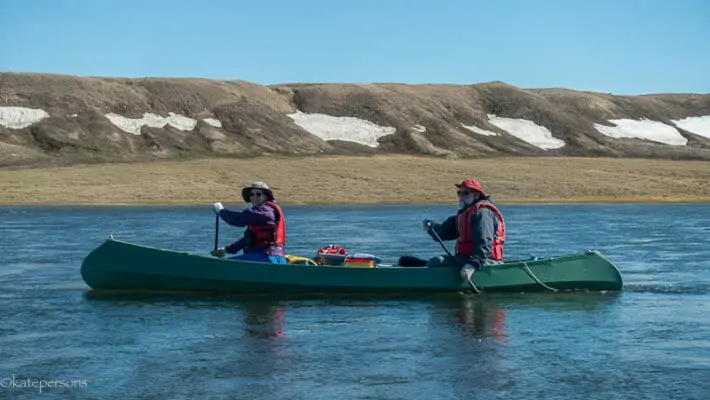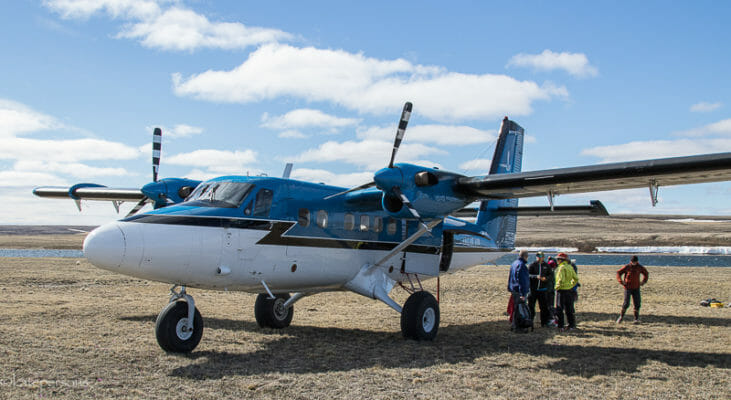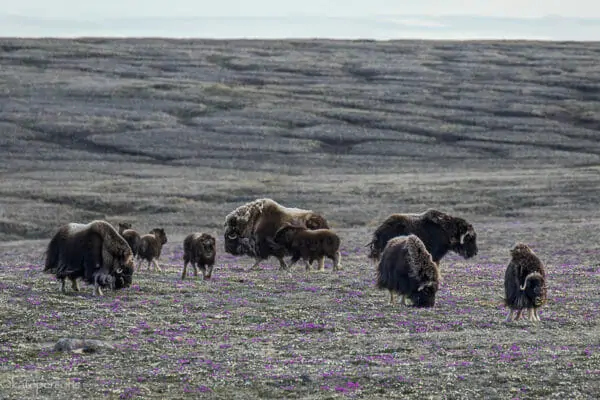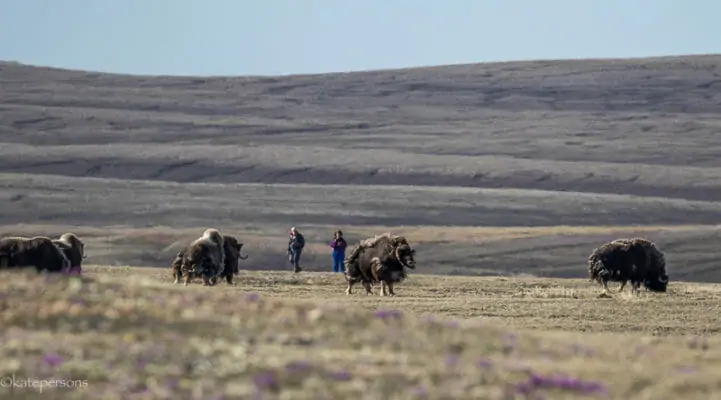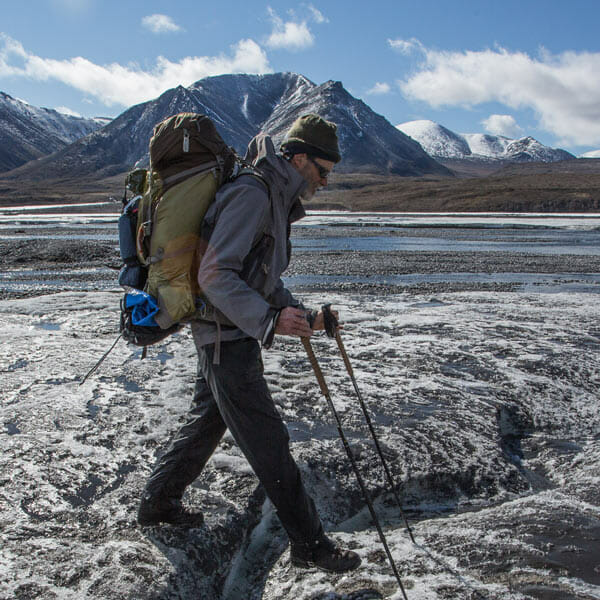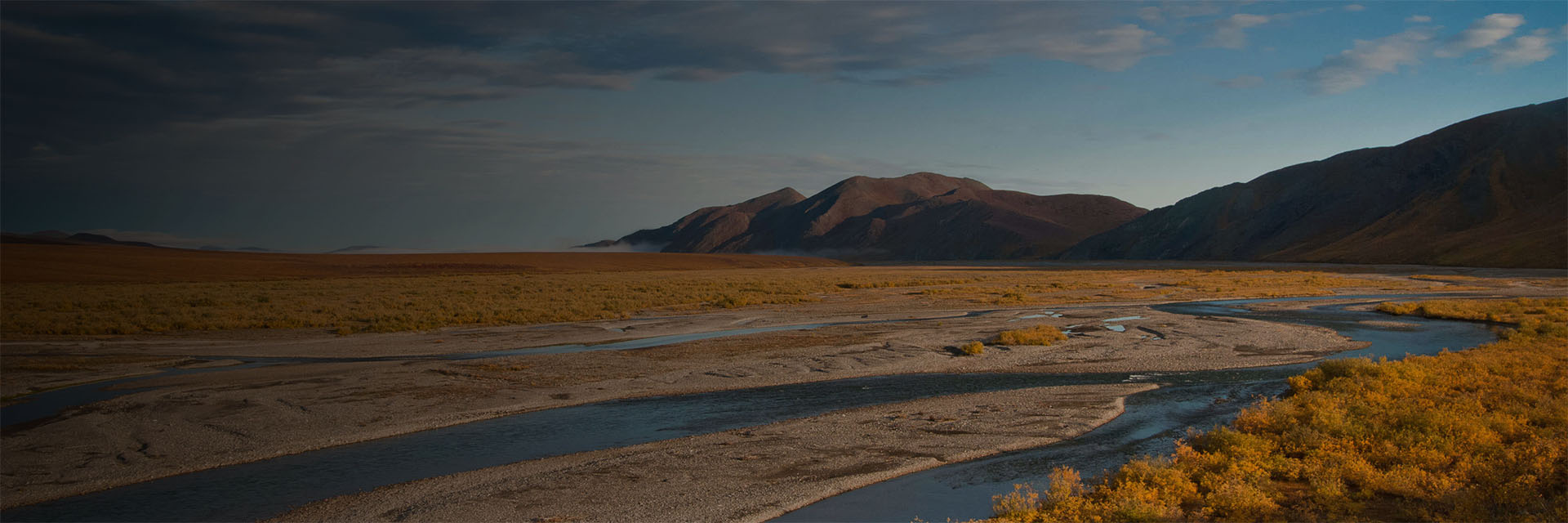Last updated: October 16, 2023
Itinerary
What follows is a general flow of events. Expect the unexpected and prepare to be flexible.
July 3
Meet with your guide this evening in Inuvik for a gear check and pre-trip meeting. Location in Inuvik TBD.
July 4
Head to the Inuvik airport and begin our journey north of North America. We will charter a twin otter airplane, and weather permitting, after flying north of the Mackenzie River Delta and beyond the Tuktoyuktuk Peninsula we cross the partially frozen Amundsen Gulf before landing on the south end of Banks Island in Sachs Harbor (Population 120) to refuel. We can take a quick walk before flying the final 150 miles to the headwaters of the Thomsen. Once we unload and the plane departs the only sound will be the wind and bird song!
July 5
We won’t have lost track of time quite yet and the midnight sun won’t have altered our rhythms too much so we will keep a relatively normal schedule and hike during the day, assemble the Ally folding canoes in the evening and sleep during the sunlit “night”.
July 6 - 10
Paddle and hike in turn. The weather and wildlife will dictate our schedule. The upper section of the river is punctuated by several nice bluffs and a few shallow sandy sections where we may need to line the canoes or nudge them over the sandbars. Several tributary streams join the Thomsen and we will encounter the first cultural sites of the trip. Place names like Muskox River and Char Lake hint at some of the wildlife we may encounter.
July 11 - 15
The Head Hill cultural site (and and even cooler un-named one nearby) is not to be missed and we will spend a full day hiking in this area, trying to count the muskox skulls and birding in the green hills.
On a mild day the land can look pastoral and verdant with herds of grazers dotting the hills. Other days the landscape is very clearly Arctic. There are long stretches where the river forms a single channel and we can drift downriver spinning on the current and scanning the sky for raptors. Other places we will again encounter shallows. The potential for headwinds is ever present. As we enter the delta where the river blends into Castle Bay we will begin to feel the coastal weather and notice the tidal influence on the river. Even near the coast the hiking is excellent and the birding gets even better!
July 16
A final day to relish the quiet of true wilderness. We may embark on an ambitious hike for a vista of Castle Bay and the icy Arctic Ocean. Or we can relax and reminisce about the wonders we have seen.
July 17
Our charter is supposed to arrive today and whisk us south back to the busy world of vehicles, internet, and trees. If the weather cooperates the plane will arrive mid-day and we will retrace our path back to Inuvik. It may be a day or more before the plane can come and get us if coastal fog obscures the landing area, but eventually, like it or not, we will fly away from Aulavik National Park, no doubt changed by the experience.




